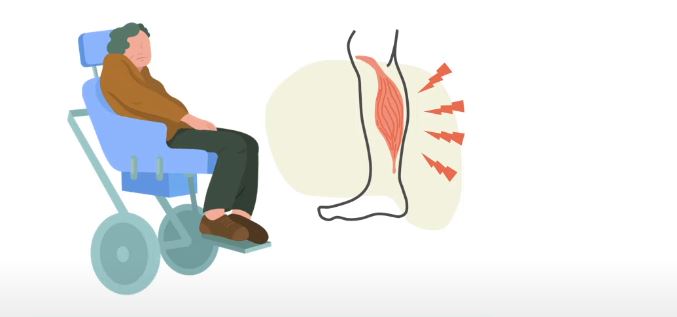
Imagine your muscles being dialed by your brain, but the line fading and crackling until nothing is picked up. Formally known as Amyotrophic Lateral Sclerosis (ALS), Ela Disease does just that. It gradually breaks the link between the body and the mind. Muscles cease to react when neurons die. Stumbling turns into walking. Slurring replaces speaking. Eventually, breathing turns into a mechanical, deliberate process.
However, there is a remarkably potent undercurrent of hope amidst that harsh reality. The scientific community, which is now more interconnected than ever, is tackling the disease from every possible angle as therapies and diagnostics improve.
Key Facts About Ela Disease (ALS)
| Attribute | Details |
|---|---|
| Full Name | Amyotrophic Lateral Sclerosis (ALS) |
| Also Known As | Lou Gehrig’s Disease, Ela Disease |
| Cause | Degeneration of upper and lower motor neurons; often sporadic, occasionally genetic (~10%) |
| Initial Symptoms | Muscle twitching, limb weakness, difficulty swallowing or speaking |
| Progression | Gradual, irreversible, and eventually impacts respiratory muscles |
| Average Life Expectancy | 3–5 years post-diagnosis; 10–20% live over a decade |
| Treatments Available | Riluzole, Edaravone, Tofersen; therapies for speech, mobility, nutrition, and respiration |
| Main Risk Factors | Aging (55–75), male gender, toxin exposure, military service, smoking |
| Diagnostic Tools | Electromyogram (EMG), MRI, genetic testing, nerve conduction studies |
| Trusted Source | Mayo Clinic – ALS |
Disengaged But Unbeatable: The Body’s Changes Due to ALS
Motor neurons can be thought of as signal towers. The brain’s messages are blocked when these towers fall. That’s how ALS develops: slowly, painlessly, but with serious consequences. Muscles gradually lose their ability to move, be independent, and eventually perform essential tasks like breathing and swallowing as a result of disconnection rather than lack of use.
The clarity of this breakdown is especially cruel. ALS preserves the intellect, in contrast to illnesses that impair it. The paradox of being completely conscious but imprisoned in a body that is becoming quieter every day is something that patients frequently discuss. Even so, their tales are frequently replete with incredible resolve rather than hopelessness.
From Innovations to Breathing Devices: The New Era of ALS Therapy
The focus of research has changed dramatically over the last 20 years from merely reporting ALS to actively halting its progression. Although there isn’t a cure, four FDA-approved medications, such as Edaravone and Riluzole, are reducing the disease’s effects. For patients with the SOD1 mutation, Tofersen, a gene-specific medication, is especially novel; in early trials, it significantly improved motor function.
Physical and speech rehabilitation are two examples of incredibly adaptable therapies that enable patients to increase their level of independence. In the meantime, malnutrition, a silent disease accelerator, is avoided with nutritional support designed by qualified dietitians. Additionally, non-invasive ventilation (NIV) devices enable people to breathe comfortably, frequently for years, when their breathing becomes difficult.
Long after their vocal cords stop working, ALS patients can still express themselves through the use of adaptive technologies and assistive devices, such as voice banking, eye-tracking keyboards, and even musical instruments.
Getting Around ALS’s Emotional Terrain
Living with ALS involves rewriting expectations in addition to managing symptoms. Patients must make daily decisions that push their emotional limits from diagnosis to progression. But many discover a new rhythm as a result of these difficulties. Some use eye-tracking software to write books, while others sit in wheelchairs to raise money for more research.
The ALS community is incredibly clear in its mission: to not only prolong life but also improve its quality through strategic partnerships with tech innovators and nonprofits. Even though the disease steals motion, it cannot touch momentum, as evidenced by platforms like I AM ALS and The ALS Association that link patients to peer support, mental health services, and innovative trials.
FAQs on Ela Disease (ALS)
What is Ela Disease?
It’s a progressive neurodegenerative condition affecting motor neurons, causing muscle weakness, paralysis, and eventually respiratory failure.
Is Ela Disease curable?
There is no cure yet, but treatments can slow progression and improve life quality.
What are early signs of Ela Disease?
Muscle twitching, limb weakness, slurred speech, and trouble swallowing.
How is Ela Disease diagnosed?
Via neurological exams, EMG tests, and MRI to rule out similar disorders.
Who is most at risk of developing Ela Disease?
People aged 55–75, especially men and military veterans, are at higher risk.
Can ALS be prevented?
There’s currently no proven method, though research is ongoing into prevention strategies.

4 Comments
Pingback: My Health Online Wales Repeat Prescription - The Game-Changer for Your Daily Meds - Route to Resilience Health UK
Pingback: The Coffee Method for Weight Loss - Is Your Morning Brew the Secret to Burning Fat? - Route to Resilience Health UK
Pingback: Gastroesophageal Reflux Disease and Your Sleep - The Shocking Link That’s Ruining Your Rest - Route to Resilience Health UK
Pingback: Is Otorohanga Dental Surgery New Zealand’s Best-Kept Secret for Affordable Dental Care? - Route to Resilience Health UK